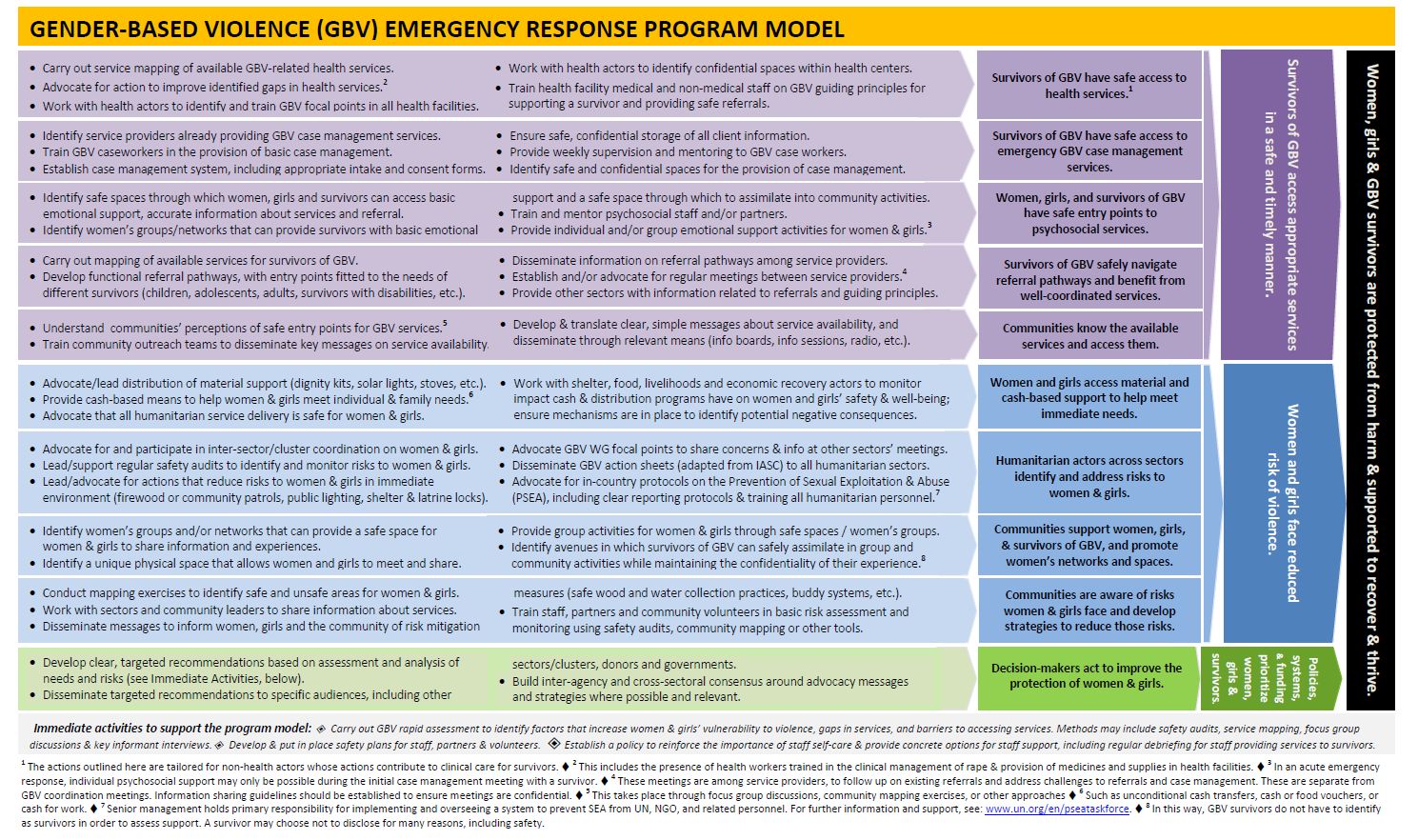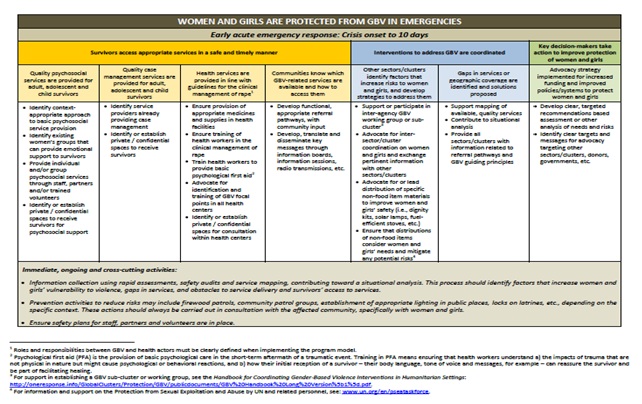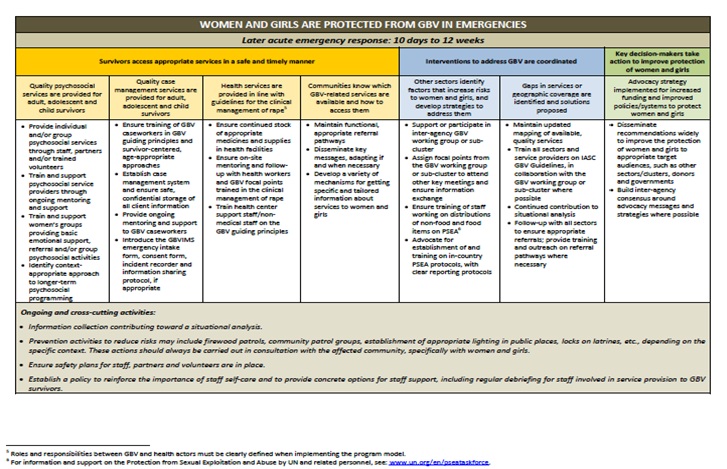- The International Rescue Committee Women’s Protection & Empowerment Unit has developed the Emergency Response and Preparedness Initiative (ERPI), with the goal of protecting and reducing the suffering of women and girls in emergencies. This initiative involves rapid deployment of staff during emergencies, as well as training and other capacity building so that VAWG programmers can better assess needs and launch interventions in an emergency. The ERPI provides regional trainings in Nairobi, as well as support through a “GBV Responders’ Network”, a website where ‘first responders’ can access real-time support and field-tested resources from IRC technical staff and from their peers.
- The ERPI has produced a matrix of interventions that programmers should consider in the early stages of an emergency. According to this model, emergency response should prioritize women’s and girls’ access to life-saving services, such as healthcare and psychosocial services, and seek to reduce immediate threats of violence. In some cases, a VAWG intervention may not actually be a stand-alone program, but may integrate essential services into existing programs. In other cases, humanitarian programmers may support local or national institutions to provide care and assistance to women or girls or provide technical assistance to existing VAWG programs that pre-date the emergency.
- The following program model is based on IRC’s years of experience in rapid response to VAWG during crisis and is built around two phases – early acute emergency response (crisis onset to 10 days) and later acute emergency response (10 days to 12 weeks). This is a critical response window, and is when humanitarian actors most often side line the needs and considerations of women and girls. The IRC program model can be used as a guide in most contexts, but should also be closely examined in light of the specific contextual considerations, analysis of needs, and pre-existing services and actors.



Source : IRC. GBV Responder’s Toolkit.
